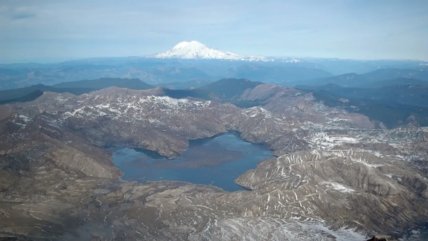A heart-shaped lake on Earth: discover the stunning Valentine's Day destination with breathtaking photos of this cosmic wonder.
Sometimes, natural disasters can create something extraordinary. This is precisely what happened with Spirit Lake. This heart-shaped body of water has become a symbol of nature's recovery following a cataclysm.
After the explosive eruption of Mount St. Helens in May 1980, the lake transformed into a gigantic heart, albeit not anatomically precise. It is visible in satellite images. On that day at 8:32 AM Pacific Time, a 5.1 magnitude earthquake triggered a massive collapse of the north slope of the mountain. This became the largest landslide in U.S. history, accompanied by a pyroclastic explosion. Mount St. Helens released a colossal plume of ash, rocks, and debris, burying the surrounding area.

The aftermath of the tragedy was catastrophic: 57 lives were lost, and Spirit Lake, which once consisted of two narrow arms, was expanded and became shallower, taking on a completed heart shape.

Initially, the body of water turned into an anoxic wasteland due to volcanic gases and wood that covered nearly half of its surface. However, life began to return more swiftly than anticipated. By 1983, scientists recorded the emergence of phytoplankton, which gradually started to oxygenate the water and restore the lake's ecosystem.
Previously, "Telegraph" reported that scientists are learning to grow human teeth. Researchers experimented with them in pig jaws.